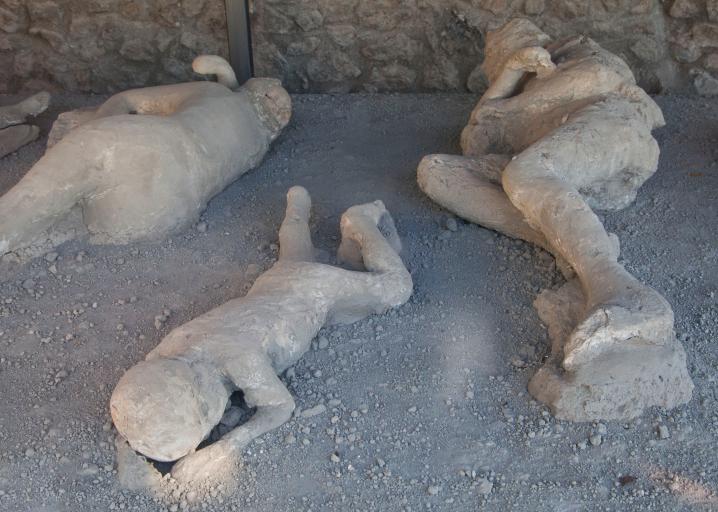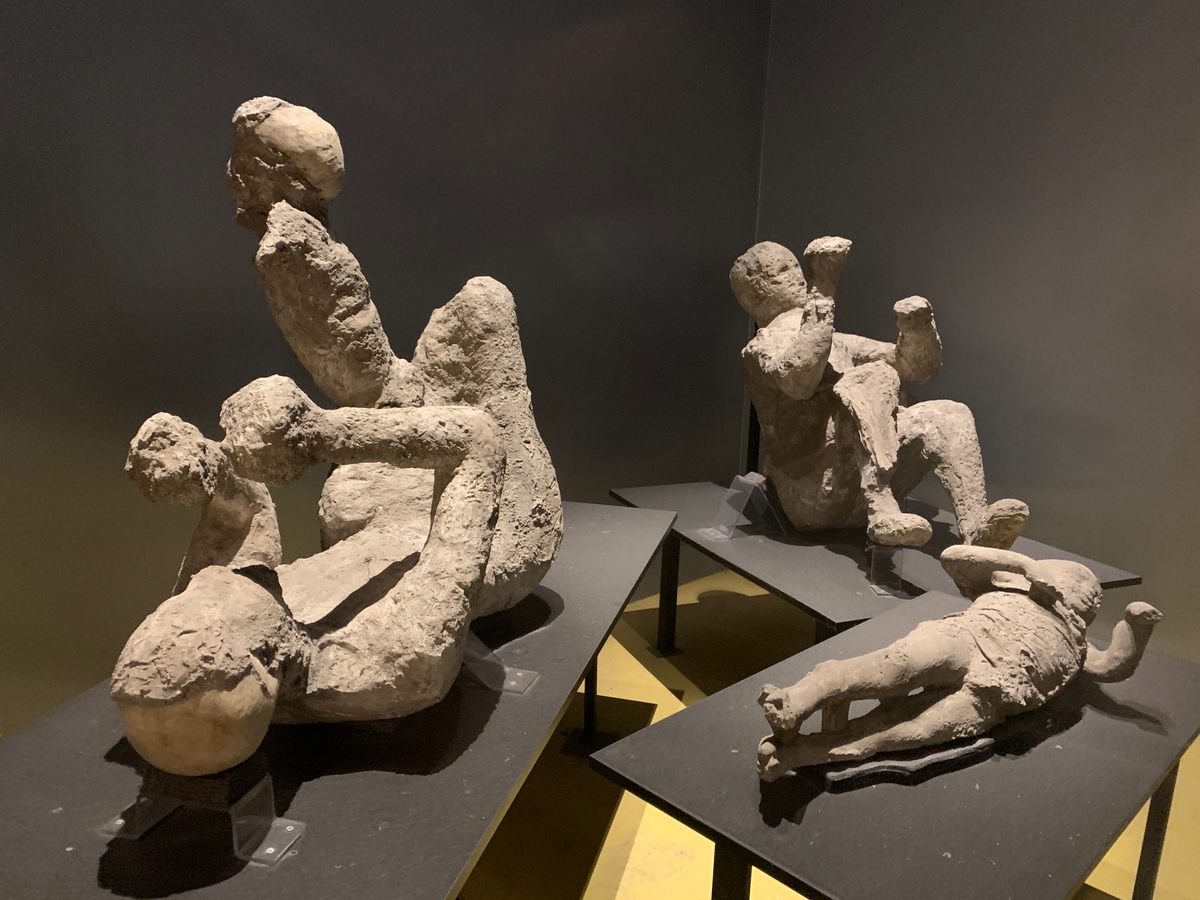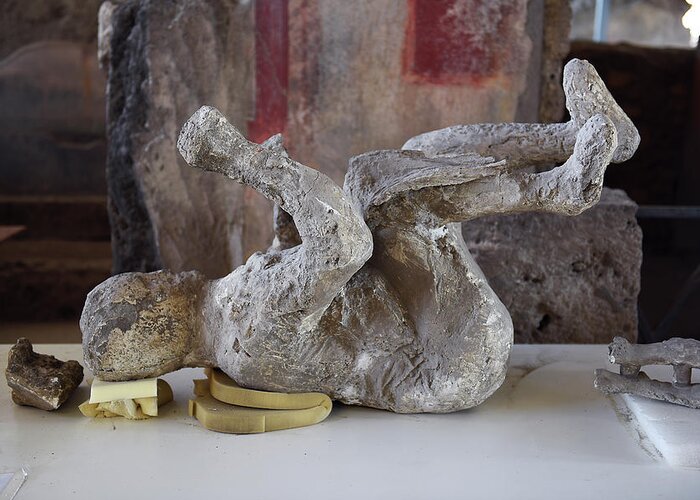The plaster casts discovered in Pompeii offer a rare and striking glimpse into the lives of the city’s inhabitants, forever preserved in the moments before Mount Vesuvius’s catastrophic eruption in 79 AD. As the volcanic eruption rained ash and pumice over the city, the bodies of its residents decomposed, leaving behind voids in the hardened ash. Archaeologists in the 19th century filled these voids with plaster, capturing the exact postures and forms of the people in their final moments. These casts have since become some of the most significant artifacts, offering a unique and emotional window into ancient life.

A Glimpse of Daily Life and Sudden Tragedy
The plaster casts of Pompeii are more than just lifeless remains; they embody the tragedy of the city’s sudden demise and the lives that were abruptly interrupted. The figures—some frozen in defensive poses, others caught in mid-motion—are frozen snapshots of Pompeii’s final moments. Some of the individuals appear to be shielding themselves from the deadly pyroclastic surge, while others seem to have attempted to flee but were overtaken by the eruption. The positions of the bodies reveal the shock and chaos that accompanied the eruption, underscoring the speed and intensity of the volcanic forces.

These casts are not just physical representations of Pompeii’s inhabitants; they also provide significant emotional weight. They offer a sense of humanity, showing the vulnerability of the people, their everyday lives, and their resilience in the face of disaster. Whether individuals are grasping objects, embracing each other, or simply lying in repose, the figures provide insight into their final moments, humanizing the event and allowing us to feel a connection to those who lived over two thousand years ago.
Archaeological Insights and Preservation Techniques
From an archaeological standpoint, these casts offer valuable insights into the nature of the eruption and its effects on the city. The detailed preservation of the voids left by decomposed bodies allows researchers to study the precise postures and conditions under which the people of Pompeii died. The casts reveal the intensity of the heat generated by the volcanic eruption, which caused rapid combustion and suffocation. Furthermore, the layers of volcanic ash and pumice preserved not only the figures but also the buildings, objects, and daily life in Pompeii, making it a time capsule of ancient Roman civilization.

Moreover, the plaster casts offer important data on Pompeii’s social and cultural history. Many of the figures are believed to represent a cross-section of the population, from children and the elderly to slaves and the wealthy. Their varied poses suggest differing responses to the eruption and how individuals from all walks of life may have reacted in their final moments. These findings deepen our understanding of the diverse nature of Roman society and the human experience during catastrophic events.
The Legacy of Pompeii: A Timeless Reminder
Today, the plaster casts of Pompeii stand as poignant reminders of the fragility of life and the power of nature. The images of these preserved figures continue to evoke reflection, offering a lasting legacy of one of history’s most tragic events. As part of the ongoing excavation and study of the site, the casts not only highlight the exceptional preservation of Pompeii but also help illuminate the broader human experience of life, death, and survival.

The casts of Pompeii are not just relics—they are touchstones that connect us with the past. As the years go by, they will continue to be a source of wonder, intrigue, and respect for the lives that once flourished in Pompeii, only to be forever captured in plaster, frozen in time.

